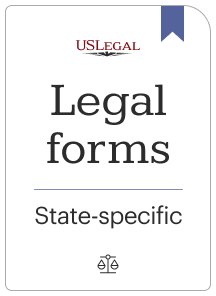

This affidavit provides for a death certificate of the deceased life tenant to be attached. It is evidence of the death of the life tenant and names the remaindermen. An affidavit terminating a life estate with remainder interest is a legal document that extinguishes the rights and interests associated with a life estate and transfers ownership to the remainder interest holder. This type of affidavit serves as a formal acknowledgment to terminate the life estate and confirm the transfer of full ownership to the remainder interest holder. Keywords: affidavit, terminating, life estate, remainder interest, legal document, extinguishes, ownership, transfer, acknowledgment, full ownership, remainder interest holder. There are two main types of affidavits terminating life estate with remainder interest: 1. Inter Vivos Affidavit: This affidavit is executed during the lifetime of the life estate holder. It is commonly used when the life estate holder decides to terminate their interest voluntarily and transfer complete ownership to the remainder interest holder. With an inter vivos affidavit, the life estate holder effectively releases their rights to the property and signs off any claim to it. 2. Testamentary Affidavit: This affidavit takes effect after the death of the life estate holder. It is typically used when the life estate holder has passed away, and their estate is being settled. The executor or administrator of the estate submits a testamentary affidavit to legally terminate the life estate and transfer the property rights to the remainder interest holder as specified in the deceased's will or through intestate succession. In both types of affidavits, it is crucial to include specific details about the life estate, such as the property description, the duration of the life estate, the identities of the parties involved, and the rights and restrictions associated with the estate. The affidavit must also outline the steps taken to terminate the life estate and transfer ownership to the remainder interest holder. Typically, the affidavit should be signed by all relevant parties, notarized, and recorded in the appropriate land records office for it to be legally binding. In conclusion, an affidavit terminating a life estate with remainder interest is a legal document used to extinguish the rights and interests associated with a life estate, and transfer full ownership to the remainder interest holder. Inter Vivos and Testamentary affidavits are the two common types of such affidavits. These affidavits include detailed information about the life estate, parties involved, and the process of termination and transfer.
Affidavit Terminating Life Estate with Deed: A Comprehensive Overview When it comes to estate planning and property transfers, understanding the concept of an Affidavit Terminating Life Estate with Deed is crucial. This legal document enables the termination of a life estate, transferring full ownership of the property to the remainder man. In this article, we will delve into the intricacies of this important document, outlining its purpose, features, and different types. An affidavit is a written statement made under oath, typically used to provide evidence or information to the court. In the context of terminating a life estate, an affidavit serves as a declaration of the granter's intent to extinguish a life estate and convey the property's ownership to the remainder man. It is accompanied by a deed that legally transfers the property rights. The purpose of the Affidavit Terminating Life Estate with Deed is to formally end the granter's possessor interest in the property granted as a life estate. It allows for an efficient transfer of ownership, eliminating the need for lengthy probate proceedings or court intervention. Different Types of Affidavits Terminating Life Estate with Deed: 1. Affidavit Terminating Conventional Life Estate: This type of affidavit applies when a conventional life estate was created, with clearly defined life tenants and remainder men. It serves to dissolve the life estate, transferring complete ownership to the designated remainder man. 2. Affidavit Terminating Legal Life Estate: In the case of a legal life estate, which occurs when a specific condition or event triggers the termination of the life estate, this affidavit is employed. The granter declares that the condition has been fulfilled or the event occurred, allowing the termination of the life estate with the conveyance of property rights to the remainder man. 3. Affidavit Terminating Testate Life Estate: When a life estate is created through a valid will, this affidavit is necessary to terminate it according to the provisions of the will. The affidavit outlines compliance with the stipulations outlined in the testator's will, ensuring the smooth transfer of property rights. 4. Affidavit Terminating Intestate Life Estate: If a life estate is created by law due to the absence of a valid will or testament, this affidavit is employed to terminate the life estate. It establishes that the legal requirements have been met, allowing the extinguishment of the life estate and the passing of ownership to the remainder man. In conclusion, an Affidavit Terminating Life Estate with Deed is an essential legal document used to terminate a life estate and transfer the complete ownership of the property to the designated remainder man. By understanding the different types of these affidavits, individuals can ensure a smooth and efficient transfer of property rights, in accordance with their estate planning goals.
US Legal Forms has 25 years of experience assisting consumers control their legal documents. Get the form you want today and enhance any process without breaking a sweat.